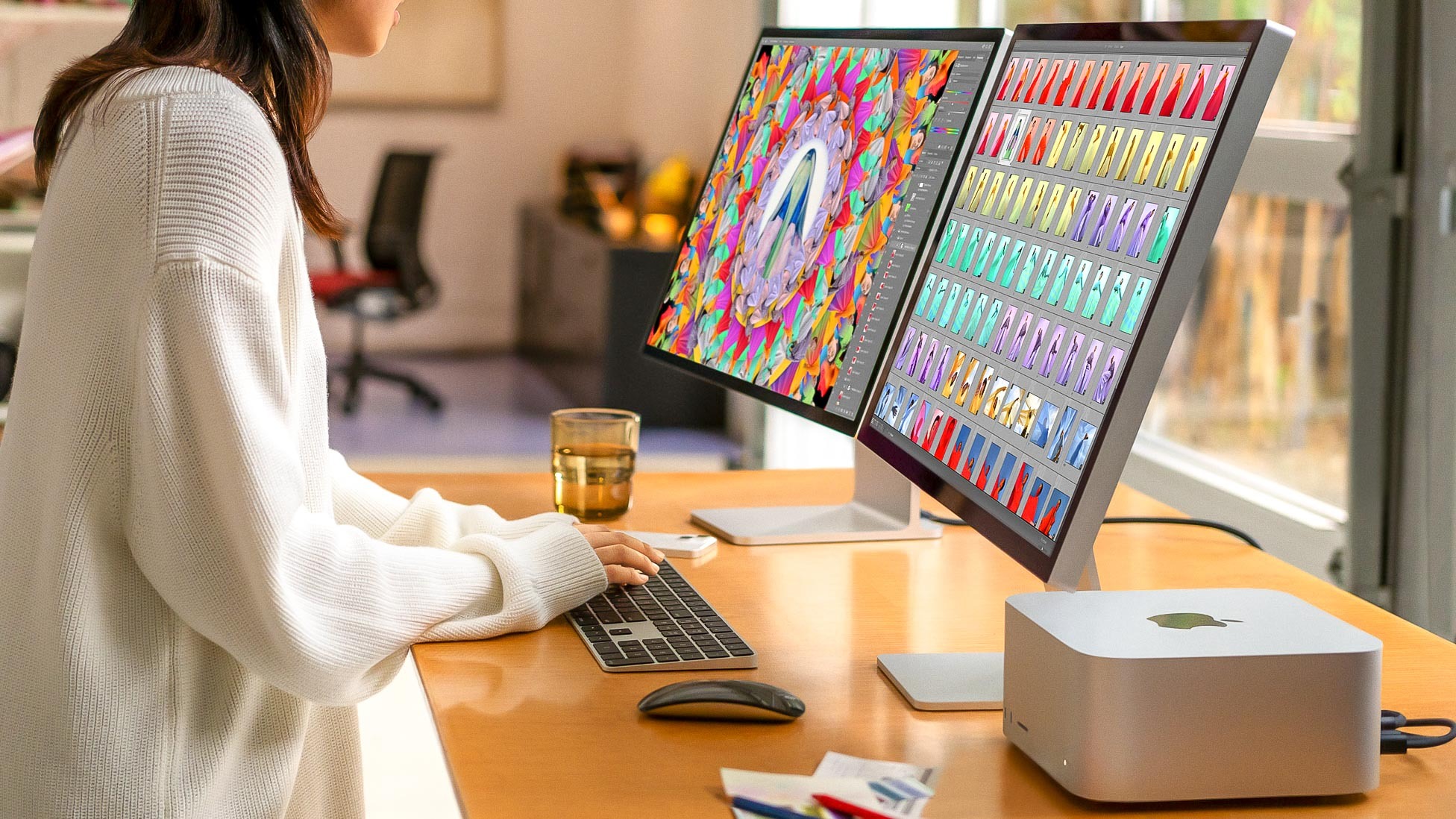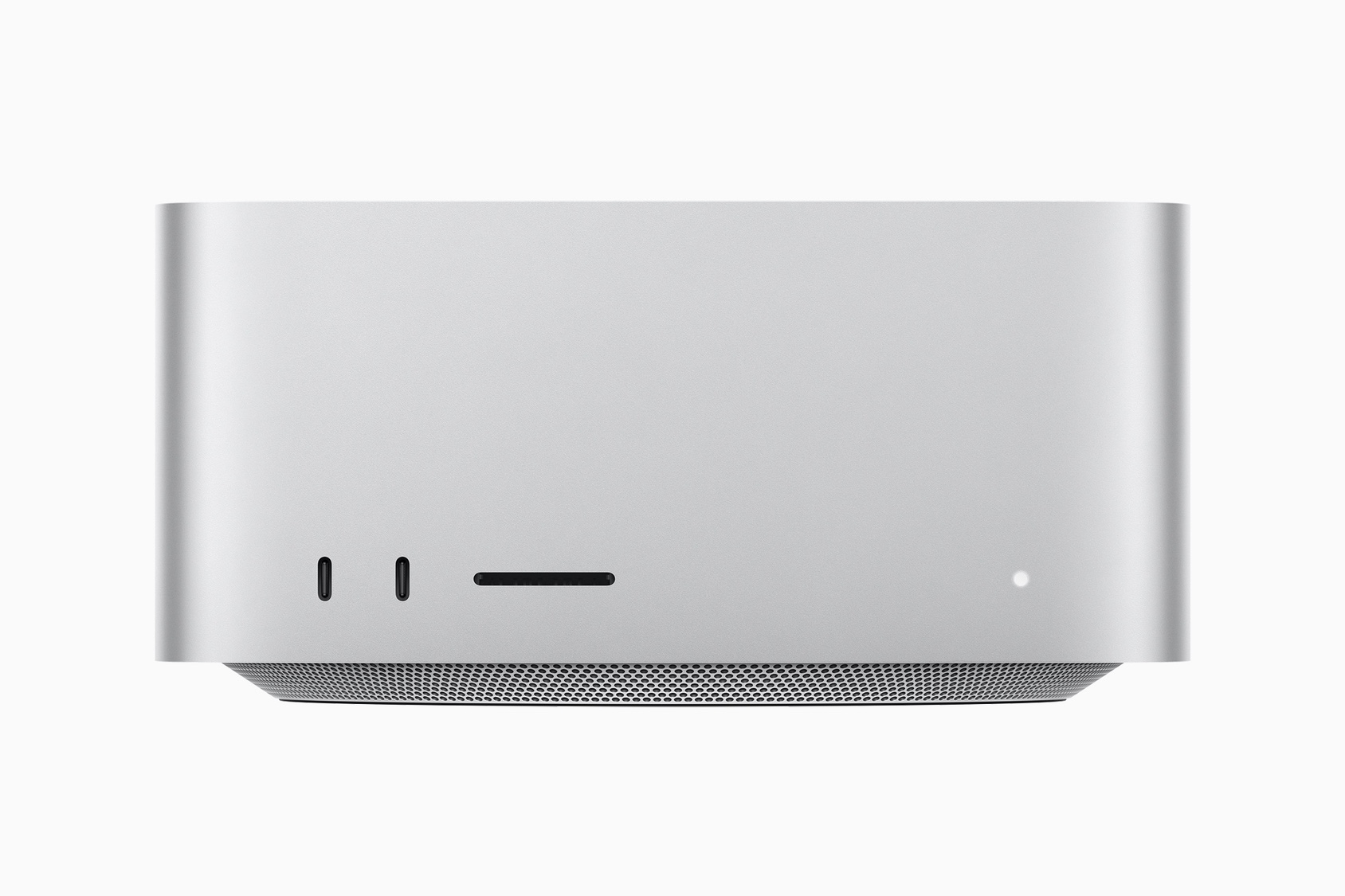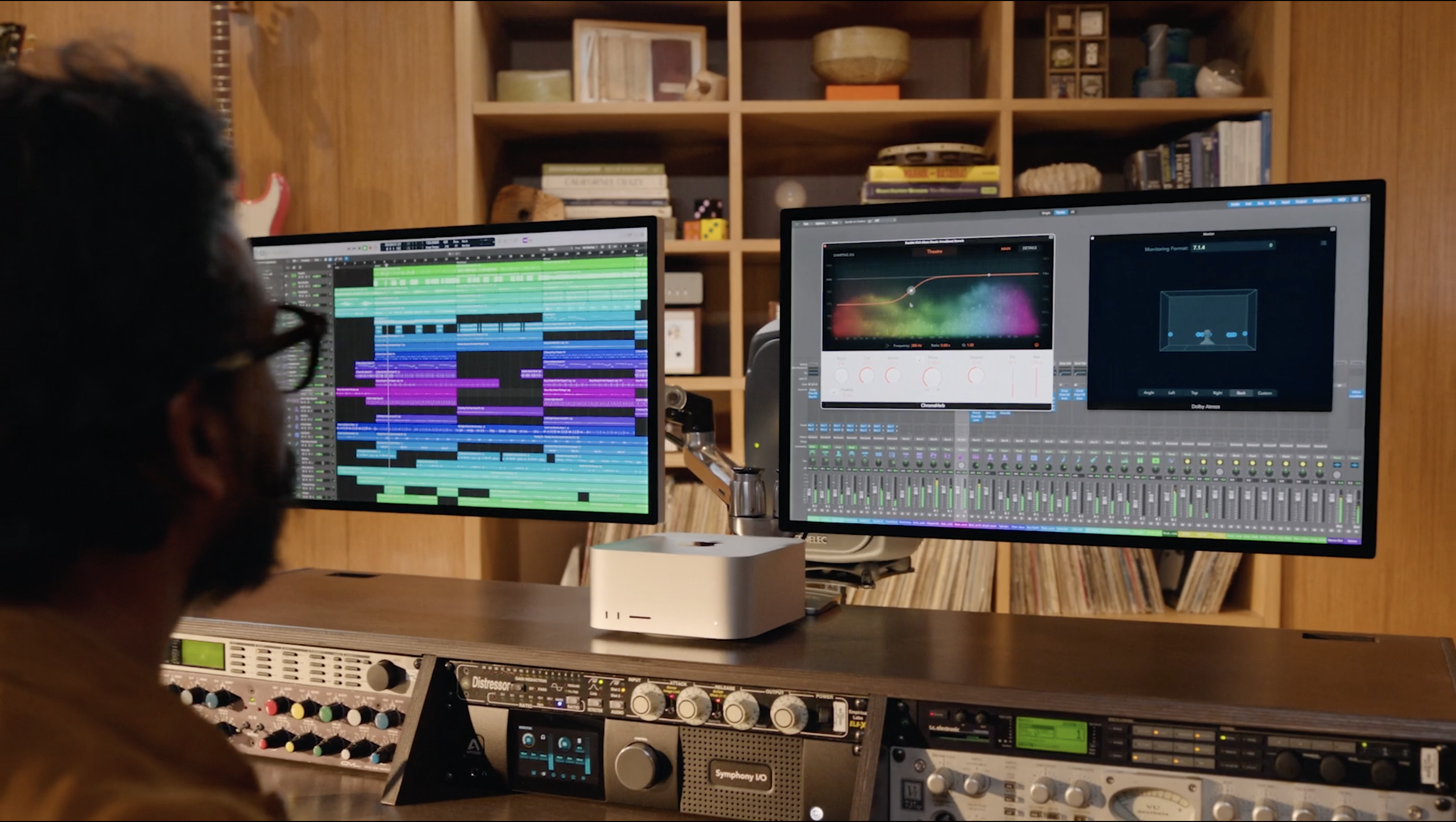Apple Mac Studio — who is this beast for?
iMac upgrade? Mac Pro challenger? Here's where the Mac Studio fits in

Any new product intro raises the usual questions about what kind of specs you'll see and how much you can expect to pay. But when it's an entirely new product like the Mac Studio that Apple took the wraps off this week, another question comes into play — just who is the target audience for this latest desktop?
The answer to that question is more complicated than it might seem at first, since the Mac Studio doesn't really replace any existing product so much as it carves out a new space between desktop options Apple continues to offer. The way Apple sees it, the Mac Studio is the machine you turn to when the Mac mini and iMac don't offer the kind of power you need for your daily tasks.
"With the transition to M1, we've provided these users with two great desktops — iMac and Mac mini, which have remarkable performance and entirely new capabilities," said John Ternus, Apple's senior vice president for hardware engineering during this week's Peek Performance event. "Yet there are some users who want even more so they can push the limits of their creativity."
Avi Greengart, lead analyst at Techsponential puts it another way. "The Mac Studio is aimed at professionals – people who compile large codebases, edit videos all day, or do other demanding computing tasks that require copious amounts of computing, graphics processing, or video rendering," he said.
This isn't a replacement for the Mac Pro. "Apple is still planning an even more powerful Mac Pro in the future; that will be aimed at this market, too, plus for use in things like CGI render farms," Greengart added.
Users in a position to benefit from the Mac Studio's M1 Max and M1 Ultra chips would know best if Apple's pitch of more power in a more compact design appeals to their needs. But it also helps to know just what the Mac Studio delivers and how this new desktop compares to Apple's existing models.
- Using a Mac VPN can keep you safe and access more streaming content
Mac Studio: What it offers
The Mac Studio looks a little bit like an elongated Mac mini. The new machine has the same 7.3 x 7.3-inch base, but the Studio's height stretches to 3.7 inches, compared to the mini's 1.4-inch height. The base of the Mac Studio pulls air into the desktop thermal system, to keep the internal components humming along.
Get instant access to breaking news, the hottest reviews, great deals and helpful tips.

It's those components that should help the Mac Studio establish itself as a powerful desktop option. You can equip the machine with either an M1 Max or M1 Ultra chipset. The former starts out with a 10-core CPU, 24-core GPU and 16-core Neural Engine. Max out the M1 Max, and you get a 20-core CPU, 64-core GPU, and 32-core Neural Engine.
As for the newly introduced M1 Ultra silicon, the base model for the Mac Studio features a 20-core CPU, 48-core GPU and 32-core Neural Engine. The Mac Studio can be packed with up to 128GB of memory (if you opt for the M1 Ultra) and storage tops out at 8TB. Apple says the storage isn't upgradable by users, but a new teardown has revealed the potential for professional upgrades.
"The M1 Ultra architecture puts an enormous amount of RAM directly available to the CPU and GPU. That, along with even more AI processing and dedicated encode/decode media resources make the Mac Studio exceptionally capable for modeling, rendering, transcoding, and more."
— Avi Greengart, Techsponential
"The M1 Ultra architecture puts an enormous amount of RAM directly available to the CPU and GPU," Greengart said. "That, along with even more AI processing and dedicated encode/decode media resources make the Mac Studio exceptionally capable for modeling, rendering, transcoding, and more."
The blend of performance and design in the Mac Studio is what impresses Mikako Kitagawa, a director analyst at Gartner who focuses on PCs and tablets. "If Mac Studio performs as it was presented in the event, then it is very impressive to have low noise and temperature on the device," she said. "Plus I am impressed by the small form factor with such a powerful configuration."
Mac Studio vs. iMac
The Mac Studio arrives in Apple's Mac lineup at the same time Apple dropped the 27-inch iMac from its offerings. (You can still get a 24-inch version of Apple's all-in-one powered by an M1 chipset.) That may have created the impression that the Mac Studio is a direct replacement for the iMac, but it really isn't, analysts caution.
"While there are undoubtedly some Mac fans who simply buy the best Mac available whether they need it or not, the iMac is an all-in-one computer aimed at regular consumer workloads — email, web browsing, and consumer video editing tasks," Greengart said. "While I can easily see an argument for consumers investing in the Apple Studio Display, for most people the Mac Studio is overkill."

Apple made performance gains by the Mac Studio over the iMac a centerpiece of its launch event. The M1 Max inside the Mac Studio has a 2.5x faster CPU than the 27-inch iMac, while graphics are 3.4x faster. The M1 Ultra provides even beefier performance relative to that iMac — its CPU is 3.8x faster than the iMac, Apple says, while graphics are 4.5x faster.
The numbers paint a very convincing picture: The iMac will continue to be the all-in-one machine for consumers who want a desktop that comes with a monitor and has just enough processing oomph to handle basic tasks. The Mac Studio, in contrast, is a machine for people who see the Mac at the center of their professional lives.
One of the big tip-offs is the Mac Studio's support for multiple monitors like the newly announced Apple Studio Display. Apple says its new desktop can drive up to four displays plus a 4K TV. That's the sort of thing you tout when you're hoping to reach people who prize productivity.
Mac Studio vs. Mac mini vs. Mac Pro
So if the Mac Studio attracts a different audience than the iMac, how does it measure up to Apple's other desktops? In the case of the Mac mini, Apple can clearly present the Mac Studio as a big step up. Currently, you can get a Mac mini with an M1 chip with an 8-core CPU and 8-core CPU — there's an Intel-based option as well — which the Mac Studio should be able to easily outperform. The Mac Studio offers more ports as well, chiefly in terms of Thunderbolt 4 ports.
The more interesting comparison is with the Mac Pro, the only remaining Mac in Apple's lineup without an Apple silicon option. At a starting price of $5,999 — $4,000 more than the base model Mac Studio — the Mac Pro is also the most expensive Mac you can buy. And yet, Apple says that its new M1 chips can outperform its high-end desktop.
"I believe this release is targeting the Mac Pro users’ replacement of their existing Intel based Mac Pro to M1 based Mac Studio."
— Mikako Kitagawa, Gartner
"I believe this release is targeting the Mac Pro users’ replacement of their existing Intel based Mac Pro to M1 based Mac Studio," Gartner's Kitagawa said.
To that end, Apple says the Mac Studio powered by the M1 Max is 50% faster than a Mac Pro with a 16-core Xeon chip. Upgrade to the M1 Ultra and the Mac Studio becomes 90% faster than that same Mac Pro.
That's a pretty astounding claim, given how much less expensive the Mac Studio is to its Pro counterpart. That performance gap won't always be the case — Apple is reportedly working on an Apple silicon-based version of the Mac Pro, which could appear as soon as this June's Worldwide Developer Conference. But it seems like the Mac Studio is shaping up to be a desktop that can hold its own with the Mac Pro while appealing to professionals put off by the Pro's lofty starting price.
Mac Studio outlook
We'll find out just how well the Mac Studio performs once we have a chance to test and review the new machine. With Mac Studio, Apple's Ternus says the company is aiming to create "something totally new that gives our users what they need to build the studio of their dreams." Only thorough testing will determine whether the Mac Studio meets that goal, but on paper at least, the new desktop is off to a promising start.
Philip Michaels is a Managing Editor at Tom's Guide. He's been covering personal technology since 1999 and was in the building when Steve Jobs showed off the iPhone for the first time. He's been evaluating smartphones since that first iPhone debuted in 2007, and he's been following phone carriers and smartphone plans since 2015. He has strong opinions about Apple, the Oakland Athletics, old movies and proper butchery techniques. Follow him at @PhilipMichaels.

